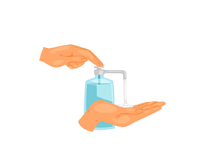Dipyridamole
Dipyridamole is a medication primarily used to prevent blood clots and to improve blood flow, especially in patients with certain heart conditions or after heart surgery. It works by inhibiting platelet aggregation (clumping), which helps reduce the risk of clot formation. Dipyridamole is often prescribed in combination with other medications to enhance its effectiveness in preventing strokes, heart attacks, and other cardiovascular events. It may also be used during diagnostic procedures such as stress tests to improve blood flow to the heart.
Uses of Dipyridamole
- Prevents blood clots in patients with heart conditions or after heart surgery
- Used to reduce the risk of strokes and heart attacks in high-risk patients
- Improves blood flow during stress tests for heart evaluation
- May be used in combination with other anticoagulants to prevent clot formation
How Dipyridamole Works
Dipyridamole works by inhibiting the function of platelets, which are involved in blood clotting. It increases the levels of adenosine, a natural substance in the body that dilates blood vessels and enhances blood flow. By inhibiting platelet aggregation and promoting vasodilation, Dipyridamole helps reduce the likelihood of clot formation, improving blood circulation and preventing complications like strokes and heart attacks.
Benefits of Dipyridamole
- Reduces the risk of stroke and heart attack in high-risk patients
- Improves blood flow to the heart during diagnostic stress tests
- Effective in preventing blood clots after certain surgeries
- May be used in combination with other blood thinners for enhanced clot prevention
How to Take Dipyridamole
Dipyridamole is typically taken orally in the form of tablets, usually one or two times a day depending on your doctor's instructions. The dosage will vary based on the condition being treated and your overall health. It is important to take Dipyridamole exactly as prescribed and not to alter the dosage or frequency without consulting your doctor. For patients using Dipyridamole in combination with other anticoagulants, careful monitoring of blood clotting levels may be required.
Type of Dosage Available
- Oral tablets
Side Effects of Dipyridamole
- Headache or dizziness
- Stomach upset or nausea
- Flushing or warm sensation
- Low blood pressure (hypotension)
- Rare: allergic reactions, including rash or swelling
Safety Advice
- Inform your doctor if you have a history of heart problems or bleeding disorders
- Consult your healthcare provider before using Dipyridamole if you are pregnant or breastfeeding
- Monitor your blood pressure regularly as Dipyridamole may cause hypotension
- Tell your doctor about any other medications you are taking to avoid drug interactions
- Avoid sudden discontinuation of the medication without consulting your doctor
Frequently Asked Questions (FAQs)
Q: What is Dipyridamole used for?
A: Dipyridamole is used to prevent blood clots, reduce the risk of stroke and heart attack, and improve blood flow during diagnostic procedures such as stress tests.
Q: How should I take Dipyridamole?
A: Dipyridamole is taken orally as tablets, usually once or twice a day, as prescribed by your doctor. Follow your healthcare provider's instructions for dosage.
Q: What are the side effects of Dipyridamole?
A: Common side effects include headaches, dizziness, stomach upset, and flushing. Rare side effects may include allergic reactions. Contact your doctor if side effects persist.
Q: Can Dipyridamole be taken with other medications?
A: Always inform your healthcare provider of any other medications you are taking, especially blood thinners or anticoagulants, to avoid potential interactions.
Q: Is Dipyridamole safe during pregnancy?
A: Pregnant women should consult their doctor before using Dipyridamole to assess the potential risks and benefits.
Download India's most affordable pharmacy app
- Compare with medicine prices
- Save upto 90% on your medicine bills

Temperature Controlled storage and delivery

Regular Sanitization

Disinfected Packaging










 Added!
Added!